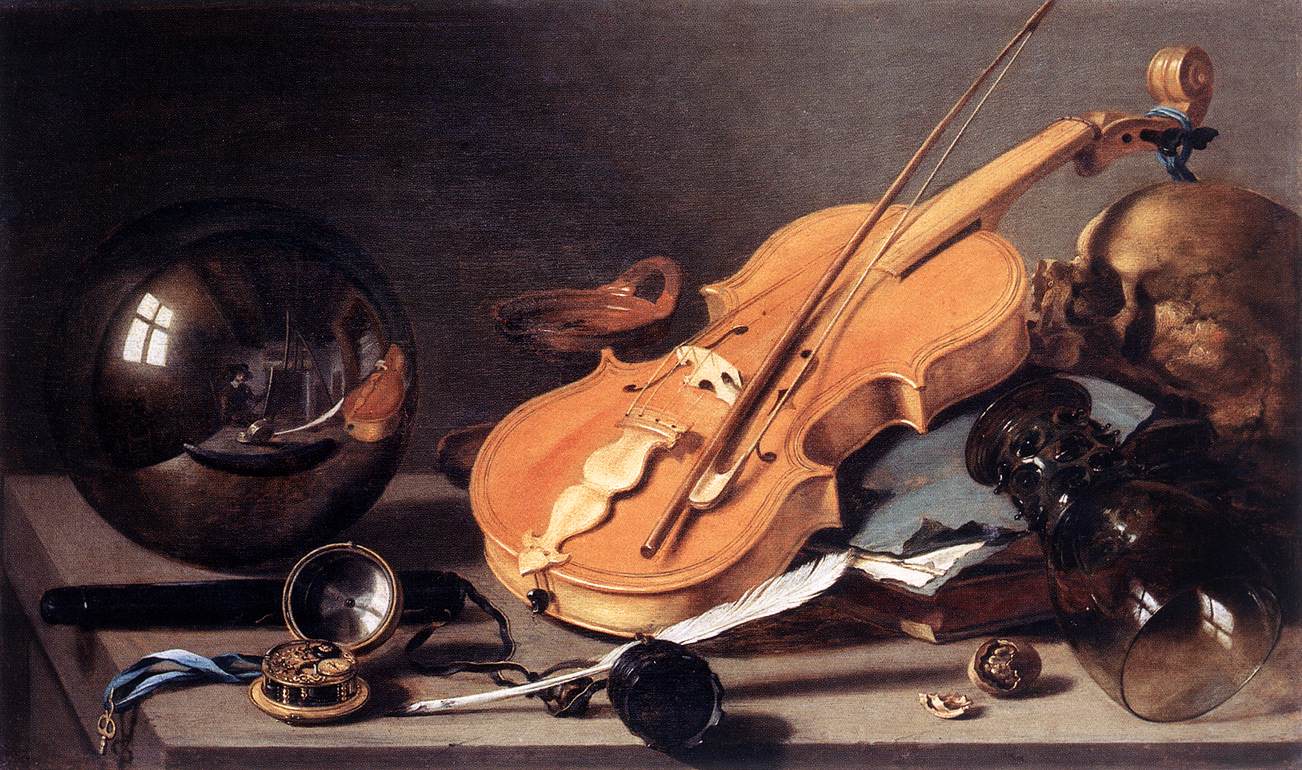Our knowledge of the history of glass depends only in part on the archaeological finds that have come down to us from different eras and societies.
Our knowledge about the use, provenance and antiquity of glass artefacts is strongly influenced by the representations of this material in paintings. Such depictions in fact provide a strategic complement for archival research and the study of artefacts.
The beginnings of glass in paintings
It is difficult to establish the date of the first appearance of glass objects in the visual arts. Present as a subject in the paintings found in Pompeii and Herculaneum, such material has has always fascinated artists thanks to its transparency and an extremely fluid and iridescent nature, representing a proof of indispensable virtuosity for the most skilled painters.
Tracing a precise chronology of the paintings in which glass objects appear is an almost impossible undertaking; instead, it could be useful to provide an examination of the different types of representations.
Rather ancient representations, like those of Victor Carpaccio (protagonist of the production of canvases in Venice between the 15th and 16th centuries), portray different models of glass among domestic objects. The Presentation in the Temple, by the Venetian painter, shows a wonderful example of the pendant lamps commonly produced in the Republic of Venice.
Art studies and Kunstkammern
Glass is also one of the protagonist elements of the representations of artistic studies and Kunstkammern. The latter term refers to collections of art objects, natural curiosities, scientific artifacts, and exotic rarities, popular in European aristocratic palaces or residences, such as symbol of social and cultural prestige.
This typology of paintings testifies to the great interest that Renaissance collectors had in glass, as a representation of luxury and well-being. A masterful example of these paintings was created by Jan Bruegel and Hendrick van Balen. Neither The Allegory of Winter In fact, the meticulous taste for the depiction of refined objects stands out.
Still life
The largest group of paintings in which glass appears are still lifes, which are fundamental for understanding the material and its uses. From stark, simple arrangements to elaborate table settings, these subjects include both locally produced glass, this is the case of the omnipresent Roman in Dutch still lifes of the seventeenth century, but also prestigious objects, fashion of Venice, pride of rich merchants and patrons.
The precise dating of these paintings helps us define the glass history currently preserved in various collections. What is more complex to establish, however, is the origin of these artefacts, which for a long time represented the main export resource for many countries.
The spread of glass in Europe and the multiplication of production centers contributed to decreasing painters' interest in the material, which ceased to be considered a distinctive trait of the elite. A dynamic that is both the cause and effect of the creation of glass with less imaginative shapes, more focused on its functional and practical properties.
But the history of glass in pictorial art does not end here. We will soon return to the topic to analyze the iconicity of a matter in constant dialogue with the subjects, societies and emotions represented.
Source: The new antique notebooks. The glasses, Fabbri Editore, Milan (1991)
Image source: Vanitas with Violin and Glass Ball, Pieter Claesz, Public domain, via Wikimedia Commons



